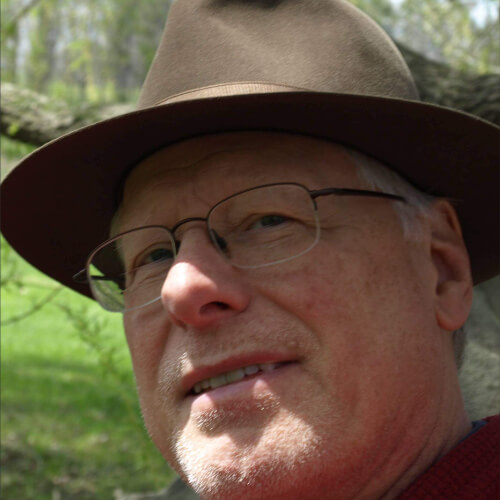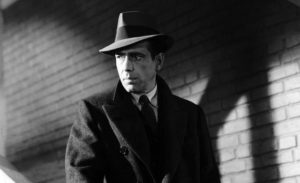Last week we looked at the mystery vs the thriller. And we all know the thriller is hot, hot, hot these days. The traditional mystery? Not so much. Although the mystery in its chick lit cozy form is doing very well. This probably has something to do with the chick lit element, more than the mystery.
In any case, I’d like to take a look today at the detective novel. That form of the mystery that started the mystery craze, and in effect defined the mystery genre.
Crime stories go all the way back to the Arabian Nights. However, the crime story as we know it today, comes from the fertile imagination of Edgar Allan Poe, with his creation of C Auguste Dupin in “The Murders in the Rue Morgue”, published in 1841.
Poe even invented the word “ratiocination” for the thinking process that Dupin used to solve crime.
If Poe invented the detective story, and all detective stories ever since have more or less followed Poe’s formula, it was Sir Arthur Conan Doyle’s Sherlock Holmes that made the detective story a mainstay of the literary scene.
I find it of interest that Dupin and Holmes are not professionals. They’re amateurs. The police are at best bumblers who know when they’re licked and need to call in the brilliant amateur specialist. And this is a feature of most mysteries that have an amateur sleuth.
Of course CSI-type forensics were a long ways off and the solution of crimes often did require the exercise of those “little grey cells”, whether or not the sleuth was a professional or amateur.
The 1930s are often called The Golden Age of the mystery, by which we mean the detective story. During that time, scores of amateur and professional sleuths appeared and disappeared. A few became household names: such as Sam Spade, Hercule Poirot, Nero Wolfe, Miss Marple, and Ellery Queen.
Others have faded to near oblivion. Sleuths such as Miss Silver, Mr & Mrs North, The Thinking Machine, Dr Thorndyke, Asey Mayo, and Loveday Brooke.
These sleuths, and many others, used ratiocination to solve the crimes that frequently baffled the police.
Today, however, the amateur is, or seems to be, very much out of his depth. DNA. Advanced surveillance equipment. Hacking of phones and computers. Traffic and surveillance cameras. Highly advanced crime labs. All these things are beyond the amateur sleuth, and even small town police departments.
Which may explain the rise of the modern chick lit cozy craze, that unlikely fusion of chick lit and the cozy mystery, and the vintage mystery, which is set in the pre-CSI past.
The vintage mystery, if well done, can be a very satisfying read, taking us back to The Golden Age — our glamorized view of the ‘20s, ‘30s, ‘40s, and ‘50s.
The chick lit cozy, focuses on a small town, or a small circle of people within a large city, crafts and small businesses, women’s issues, and at some point the crime. These reads are very popular. They’re not officially labelled “chick lit cozies”. That is a term I adopted from another writer who used it to differentiate them from traditional cozies. They’re simply called cozies and have essentially taken over that sub-genre.
Personally, I’m not fond of the chick lit cozy. Generally, there is more chick lit than cozy mystery in these books. Particularly the sweet romance element. Which probably explains why the sub-genre is dominated by women writers and readers.
However, they may end up being the mystery genre’s salvation. Mystery readers are aging. A fact brought vividly home to me recently when a Facebook ad for my Justinia Wright mystery omnibus was almost totally served to those 65 and over. And in that group, overwhelmingly to women.
The mystery is essentially a puzzle. A problem, the crime, that needs to be solved. It is a riddle, and we want to know the answer.
Which, to my mind, means that for all the sophisticated data gathering equipment available to the professionals, it still takes ratiocination, those little gray cells, to make sense of all the data and determine motive, means, and opportunity.
This fact actually makes the detective story very modern. A part of our ongoing discussion concerning the role of people and machines. The detective story clearly comes down on the people side of the equation.
The detective story is a human story. It is a story about righting wrongs. Wrongs done to people and society at large. The detective story focuses on a small group of people to find a killer and bring that killer to justice. It’s personal. It’s about bringing balance and order to the world of a group of people that has gotten out of balance and lacks order due to the violent crime.
Which is why I do think the mystery will endure. What it will take to bring it back into popularity, I don’t know. But the success of series such as Lawrence Block’s Matt Scudder and Sue Grafton’s Kinsey Milhone give me hope. Lots of hope.
We all know the big names of the mystery genre, even if some of us aren’t mystery fans. Next week, though, I’d like to focus on some of the lesser lights and their creators, and even a few of the new kids on the block.
Comments are always welcome, and until next time — happy reading!
Share This!


Really emjoyed the article. I became a fan of Golden AGe mysteries – first on tv, then on books – when I was a little kid and watch them on tv with my grandma. In fact, I blame those b/w mysteries of the 1930s and 1940s for my fall into dieselpunk 😉
True, a lot of cosy mysteries today are mostly romances. I know, I’ve read my share, expecting something very different. I mean, you have certain expectations when a story is presented as a mystery and are not very happy when you get a lot of smooching instead…
I like all kinds of mysteries, but I still prefer the classic kind. True, mysteries are always about the human nature, but the use of all the new technology in the new series kind of takes away from that. Well, at least for me. When all the detective has is a few clues and his understanding of human nature, I think the story becomes a lot more interesting and poignant.
But it may be just me 😉
I agree: the old-fashioned whodunit, where the sleuth has to rely on visible clues and evidence and a lot of thinking, are the best.
I recently just did a review of The Big Sleep by Raymond Chandler (on my blog at cwilliamperkins.weebly.com) and loved it. Detective stories are fun and I especially like when they intersect with chrime noir. I think your apt to observe the connection between those old mysteries and TV procedurals like law and order or csi. Maybe the detective story has evolved and filtered into other modern genres and formats in small but influential ways. But those early days were so pure, it’ll probably never be like that… Then again….
Chandler was one of the greats. A rebel in his day, criticizing Agatha Christie no less! He favored real life presentations, and despised the locked room mystery. Perhaps what we’re seeing, as you poined out, William, is the evolution of the detective story – an evolution started by Chandler.
I agree: those early days were pure. Hopefully the pendulum will swing back that way again.
Interesting, Christopher! Don’t forget there are a LOT of women over 65, and Agatha Christie remains by far the highest selling author in history, with over 2 BILLION books sold.
I enjoy ‘CSI’ type TV shows, but, machine-wise, I prefer steam trains to lab equipment, so ‘MURDER ON THE ORIENT EXPRESS’ is more my kind of thing. The new movie adds a wooden trestle bridge. My WIP also has both a (streamlined) steam train and wooden trestle bridge. I add a forest fire that burns the trestle bridge down, taking half the train with it. But that’s just me!
Thanks for the encouragement, John! I appreciate that!
I’m with you: those CSI-type TV shows are pretty cool, but I’ll take a steam locomotive over all that fancy computer stuff any day.
Your WIP gets more and more interesting. And we like burning down bridges and trains! Just in books, of course. 🙂